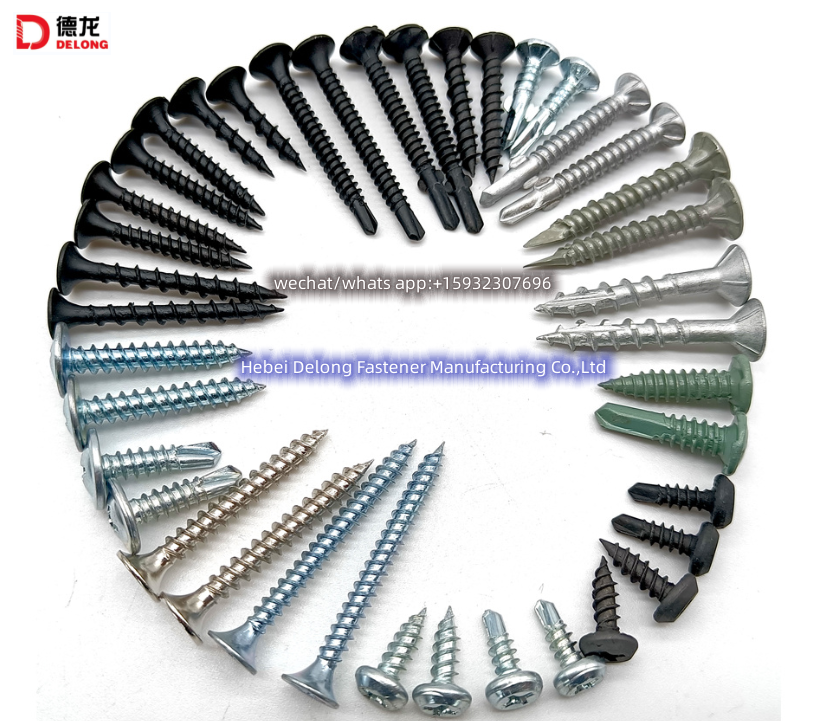oem drywall screw length for 1 2 drywall
Understanding OEM Drywall Screw Length for 1/2 and 5/8 Drywall
When it comes to drywall installation, choosing the right type of screw is crucial for both the integrity of the structure and the ease of the installation process. OEM drywall screws, designed specifically for attaching drywall, come in various lengths and types, each suited for different drywall thicknesses and applications. In this article, we will explore the appropriate screw lengths for 1/2 and 5/8 drywall, detailing the factors that influence screw selection and installation practices.
Types of Drywall
Before delving into screw lengths, it’s important to understand the types of drywall commonly used. The two most popular thicknesses in residential and commercial projects are 1/2 and 5/8. The 1/2 drywall is typically used for interior walls and ceilings in most non-load-bearing applications, while 5/8 drywall, being more fire-resistant and soundproof, is often utilized in commercial buildings and for ceilings in high-traffic areas.
Screw Length Selection
Selecting the right screw length is imperative to ensure that the screws adequately penetrate the drywall and secure it to the framing materials (usually wood or metal studs) without compromising structural strength.
1. For 1/2 Drywall The recommended screw length for securing 1/2 drywall is typically 1-1/4 screws. This length ensures that the screw adequately penetrates the drywall and advances into the underlying stud, providing sufficient holding power. Using screws that are too long can lead to penetration past the stud and into the next material, which may cause damage to plumbing, electrical, or other structural elements behind the wall.
oem drywall screw length for 1 2 drywall

2. For 5/8 Drywall When working with 5/8 drywall, a longer screw is necessary, generally around 1-5/8 in length. This increased length compensates for the added thickness of the drywall, allowing for proper anchoring into the studs. Like with 1/2 drywall, using screws that are too long can lead to complications, such as damaging insulation or electrical wiring.
Additional Considerations
1. Screw Type It is important to select the correct type of screw based on the material of the stud. For wooden studs, coarse-thread screws are typically recommended, as they provide better grip. For metal studs, fine-thread drywall screws are more appropriate since they are specially designed to tap into the metal.
2. Screw Spacing Beyond screw length, the spacing of screws also plays a pivotal role in drywall installation. Generally, screws should be placed 16 inches apart along the edges and in the field of the drywall sheets. This spacing ensures maximum stability and strength of the drywall on the frame.
3. Installation Techniques When installing drywall, it is important to drive the screws just below the surface of the paper without tearing it. This creates a smooth finish that can easily be covered with joint compound during the finishing process.
Conclusion
Choosing the correct OEM drywall screw lengths—1-1/4 for 1/2 drywall and 1-5/8 for 5/8 drywall—is essential for a successful drywall installation. Consideration of screw type, spacing, and proper installation techniques will contribute significantly to the durability and performance of the finished wall. Whether working on a home renovation or a large commercial project, understanding these fundamentals will lead to a smoother installation process and a higher quality end product.
-
Top Choices for Plasterboard FixingNewsDec.26,2024
-
The Versatility of Specialty WashersNewsDec.26,2024
-
Secure Your ProjectsNewsDec.26,2024
-
Essential Screws for Chipboard Flooring ProjectsNewsDec.26,2024
-
Choosing the Right Drywall ScrewsNewsDec.26,2024
-
Black Phosphate Screws for Superior PerformanceNewsDec.26,2024
-
The Versatile Choice of Nylon Flat Washers for Your NeedsNewsDec.18,2024










